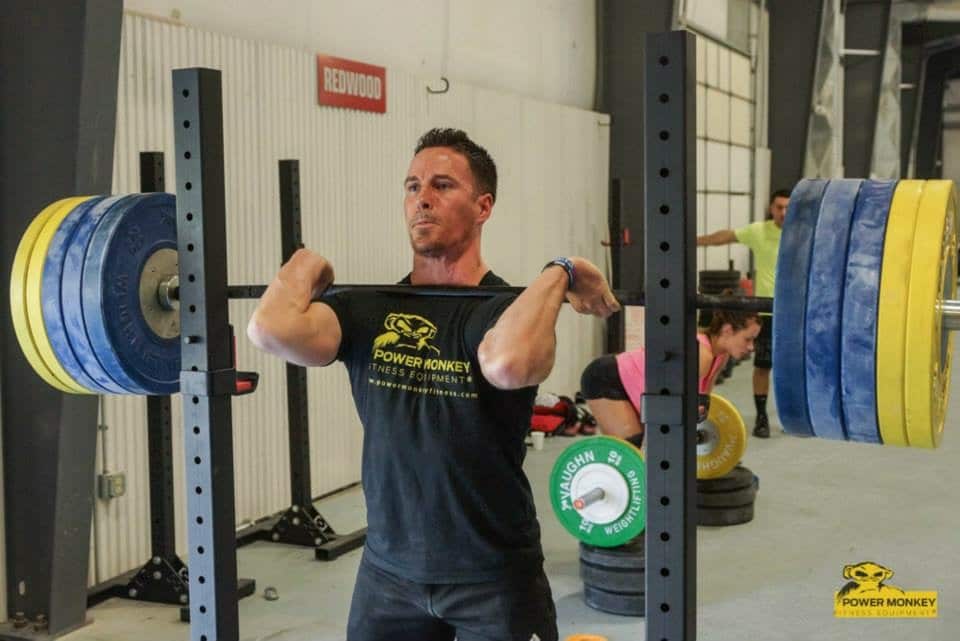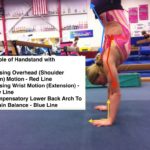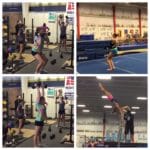The Shoulder Mobility Paradox in Olympic Weightlifting (Part 1)
Over the last 4 years I’ve been really fortunate to learn from a lot of great Olympic Lifting coaches, and also treat a huge number of people training Olympic Lifting movements. Unlike gymnastics, Olympic Lifting was something I was not as familiar with. So, I wanted to take a few years of doing it myself, learning, and treating athletes with injuries in this sport before coming up with some concepts. Now that I have had time to lift more myself, treat patients for injuries, and brainstorm patterns around injury mechanisms, I want to start sharing some ideas to help people out.
I will openly admit that these concepts stem from conversation with many friends of mine. My good friend Dan Pope, local Oly coaches like Dave Picardy, as well as the fantastic Power Monkey Olympic Lifting coaches (Chad and Jodi Vaughn, Mike Cerbus, Jess Lucero, Vanessa McCoy, and more) all deserve a piece of the credit. For this post series I collaborated with Mike Cerbus to get some information and videos, which you will see below. The concept I wanted to talk about in this post is something I’m currently calling the “Shoulder Mobility Paradox”. I’m quite sure I’m not the only person to consider this, but just wanted to offer my thoughts based on the athletes I treat for shoulder pain and people I work with.
The Bar Path to Overhead/Front Rack Opposition
Being able to execute a straight bar path during the pull phase of both snatches and cleans requires a huge amount of compression strength. Upper body muscles that fall into this group of compression synergy are the latissimus dorsi, teres major, subscapularis, and pec major/minor. This is even more so in the snatch pull as compared to the clean pull, as a wider grip creates a more challenging lever arm to work against.
Ironically enough, the direct opposite of these compression actions are ranges of motions needed for an ideal overhead and front rack position. This is more so with an overhead narrow jerk grip compared to a wider snatch grip. Being able to get true overhead shoulder mobility for full extension and external rotation (armpits forward) requires the lats, teres major, pecs, and subscap to all lengthen optimally.
Another motion that requires very good extensibility of the muscle groups noted above is front rack position. To show a proper front rack position, an athlete must have the ability flex and externally rotate the shoulder fully. This is especially true for athletes who are taught to have a much wider rack position for their jerk. Together these shoulder mobility requirements are among others needed from in the thoracic spine, elbow, scapula, and wrists for a solid front rack.
During shoulder mobility assessments, I often find that during true overhead mobility screening, the scapula moves excessively or the lower back extends excessively as a result of this lat/teres major stiffness. When these muscle groups lack mobility, it is very common to see movement faults show up in certain areas of a jerk or front rack. I often find a concurrent increases in anterior capsular mobility that my be concerning under heavy load, especially when technical aspects of the lifts are not ideal. It may create a situations where the joint, anterior labrum, and biceps tendon may be taking more strain to allow for made lifts. This videos below of this demonstrate this on female gymnasts, but the principles remain parallel between gymnasts and Olympic Lifting athletes I treat.
The most common movement compensation seen during barbell movements with these soft tissue limitations is an over extended lower back position during closer grip movements. This tends to occur because the lats originate from the lower back/upper pelvis and must shorten as the arms elevate. Another common problem is internal rotation of the armpits and shoulders in a jerk, as attachment of lat/teres to upper humerus may pull the shoulders inward at end range. (My man Dan Pope has an article with more on this) You may also see someones head move forward excessively for brain to perceive the bar being overhead, when it truly is not. Below you can see a few of these. The most obvious fault is a jerk position that is in front of the body causing a missed lift.
Missed lifts can also occurring when catching cleans, as the elbows are unable to stay up and collar bone shelf. Other front rack errors include the athlete being unable to widen the grip during a front rack, not being able to full grip the bar in the receiving position of a clean or during front squats, or internal rotation of the shoulders in the rack position. Below you can see a few of these.
These concepts are where I feel the shoulder mobility paradox stems from. What may make someone have a great pull, bar path, and strong tension on the bar may progressively cause them to lose their front rack and true overhead mobility position.
I will cover more in depth assessments and how to deal with these issues, but one of the most important aspects is making sure we screen for isolated overhead mobility in various hand positions like close grip jerk, under grip jerk (forces internal rotators to extend more), snatch grip, and other isolated front rack positions.
Why This All Matters
In relation to performance, these shoulder mobility issues clearly will affect technical positions and the ability to get ideal overhead mechanics during heavier lifts. I see this show up less in overhead snatch position, as the wider grip does not demand as much from the muscles noted. Where I see it show up much more is when athletes try to jerk, train variations of presses/push presses. or receive heavy cleans. These more narrow grip and front rack positions demand much more. Often times coaches can’t apply their great technical knowledge due to underlying lacking joint and soft tissue mobility basics.
From an injury point of view, locally at the shoulder this can create a lot of problems. When larger muscles like the lat, teres, and pec overpower the opposing muscle groups of the scap and upper back, it can create a shoulder joint that is not well balanced. The prime movers may dominate and the smaller rotator cuff muscles may not be able to co – contract under load. This may create lacking dynamic stability, and an inability to tolerate sudden receiving heavy snatch or jerks overhead.
Muscular stiffness in these areas can cause the shoulder joint to sit anterior and internally rotated, along with possible anterior/internal rotation of the scapula, which may affect sub acromial space. The short answer to this is that non ideal shoulder mechanics may cause symptomatic irritation of the rotator cuff, bursa, labral tissue, or biceps tendon. Not to mention progressive anterior capsular laxity with lacking dynamic stability might lead to disaster with a risk of shoulder subluxations or dislocation events. From a pattern point of view, I have found this movement and symptom description relationship to be very common as a root of progressive shoulder pain during lifts. Over time it can create much larger injuries that really hold back lifters.
Mike and I have talked about the importance of mastering barbell technique basics, performing regular maintenance care to the shoulders, and also keeping up mobility methods that are supported by current evidence/research with a good assessment in front of it. In a future Part 2 post, I will cover another pattern of shoulder mobility loss I am seeing, and then in Part 3 I will offer lots of ways to help address issues that are found.
Want To Learn More? Get “Monkey Method: Movement Essentials” 30% Off For Cyber Monday!
If you are a coach or athlete interested in learning more about these concepts, definitely check out “Monkey Method: Movement Essentials“, which is a 200+ page educational PDF and video assessment series I did with my good friend Dr. Dan Pope for handstands, muscle ups, and the Olympic Lifts. It has 5+ hours of video assessment content, and hundreds of our favorite mobility, strength, and correctional exercises.
Thanks for reading,
– Dave Tilley DPT, SCS






